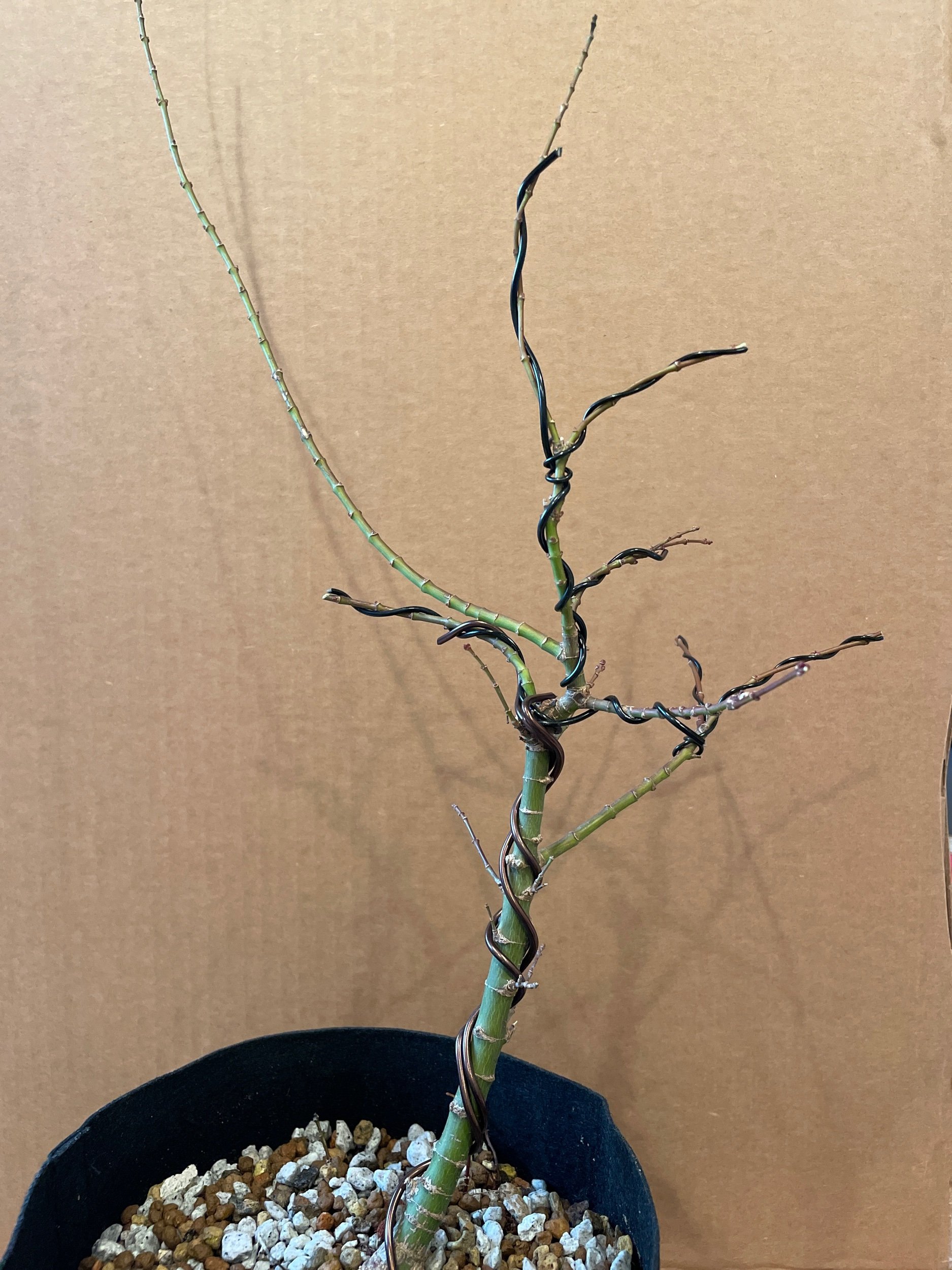Koto Hime Maple, #2209
July 2024
Cleaned up branches, alternating, remove downward/upward leaves. Still unsure about main trunk having no lower movement—should I air-layer then trunk chop?
Koto Hime Maple - rare, dwarf, green. Pacific Bonsai Expo, $45. Sacrificial branch. Air layer of the original, first of its kind from Japan.
March 2024
Cleaning up, minor pruning, recent rains
Found a lot of black aphids under most leaves—tightly clustered so not easily seen. Sprayed with soap insecticide.
May 2023 SBBK Workshop:
Sensitive to wiring marks or biting—remove it all for now. Some marks observed—May never go away.
Decide on overall height and goal—18” tall and to thicken trunk for taper. Let it grow out and it will add taper—trimming branches too much now May weaken it and slow growth.
Clipping off the apical tips on all branches will push budding back to trunk & branches. Roto Hime has many fine nodes and will bud leaves and branches everywhere.
Once primary branches emerge at the lower 1/3 to 1/4 of the overall height, can trim branches after inner most set of leaves—will ramify and develop less leggy branches.
Brittle at this age and trunk movement will be achieved by clip and grow and not wiring or bending.
Looks healthy.
July 2024 air-layered apex
Koto Hime Japanese maples are extremely easy to root as semi-softwood cuttings. Although cuttings can be taken anytime with good results, the ideal time for rooting is in late spring. Two to four inch terminal semi-softwood cuttings taken in May or placed under mist can be expected to root in approximately two to four weeks. Thick branches also root easy.
Koto Hime Japanese maple can also be air layered with ease. Even large branches over one inch in diameter will root in approximately two months when taken in spring.
Since the natural characteristic of Koto Hime Japanese maple is upright the standing bonsai styles, (formal and informal upright and slanting) are the best forms to use. Any horizontal branching must be trained by wiring or pruning. Even if the branches are wired down, all future growth will remain upright.
Small size bonsai can be developed quicker than larger specimens, especially when air layering sections from large plants. Small specimens need small, neat foliage to be in proportion and this cultivar is perfect for that. The foliage is so small I have not found it necessary to defoliate to reduce the size. Small leaves often are deformed and do not resemble maple foliage.
Plan - spring 2025
Grow out to build trunk.
Ensure that nebari is clean and encouraged.
Plan - late summer 2023
Let it grow out to build the trunk and possibly chop in the winter or spring, picking a new leader to develop trunk taper.
Would like to air layer the top half without risking the bottom half
Marci cubo / San Jose
Juan Cruz (Abas)
If you have long internodes, recommends a hard cutback—leave a stub with a “ring” where buds will emerege.
Cut back in early spring, before sap starts to run
As buds emerge, check each day, pinch out any third leaf—leaving two








